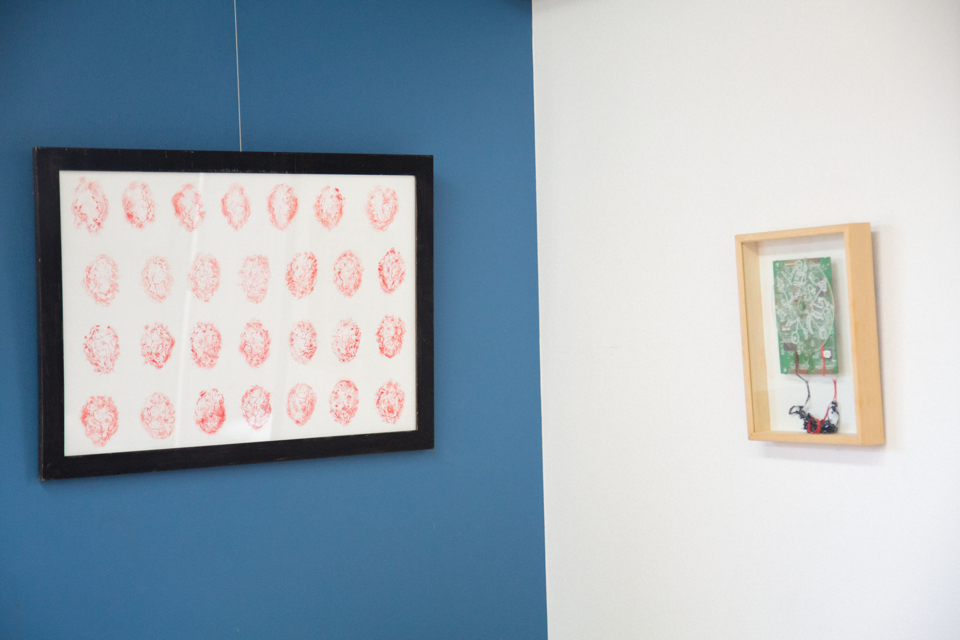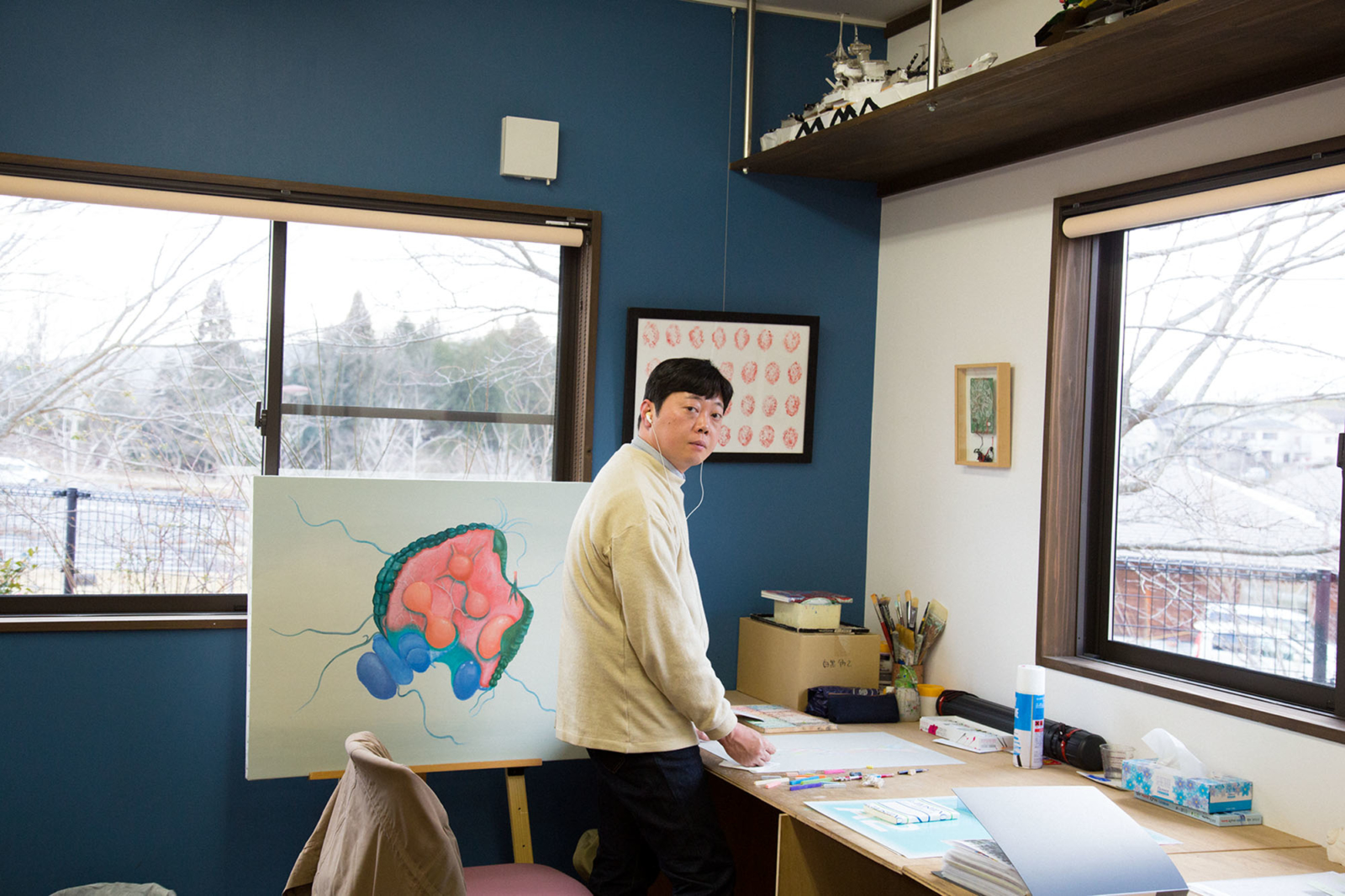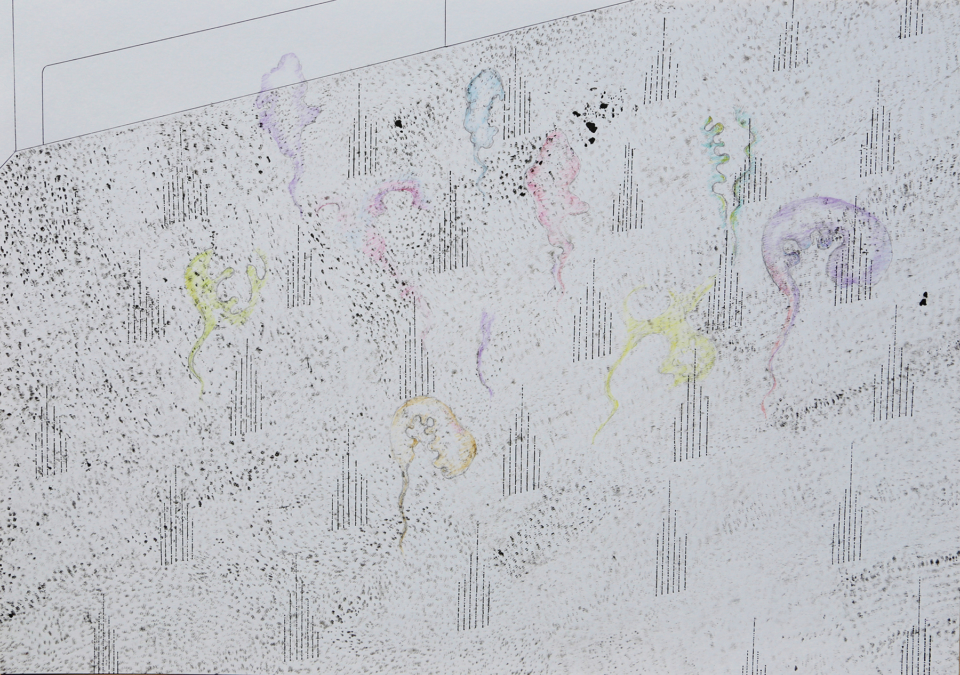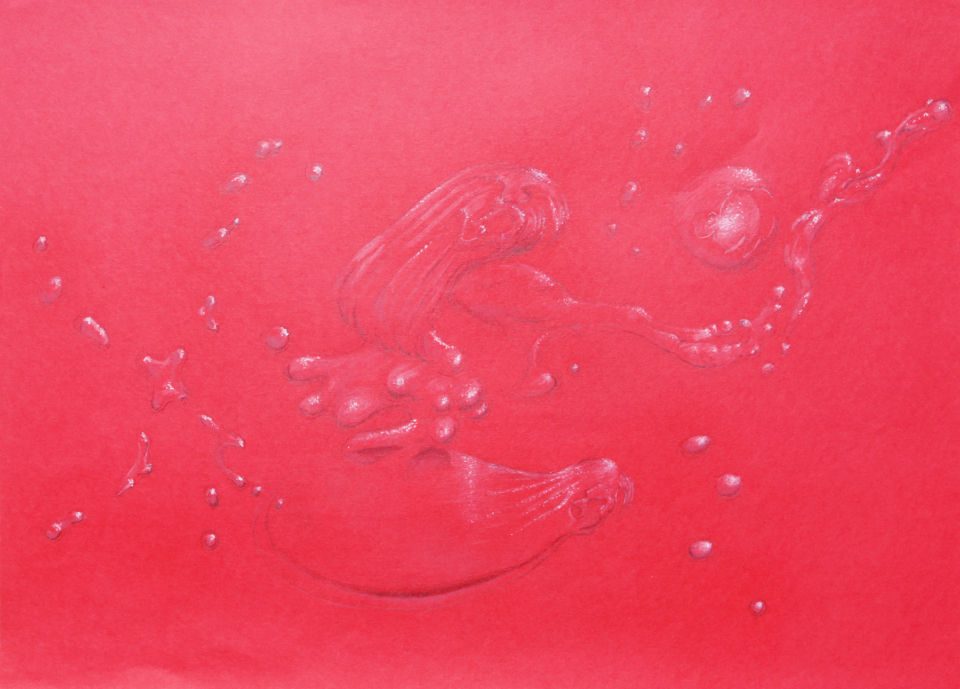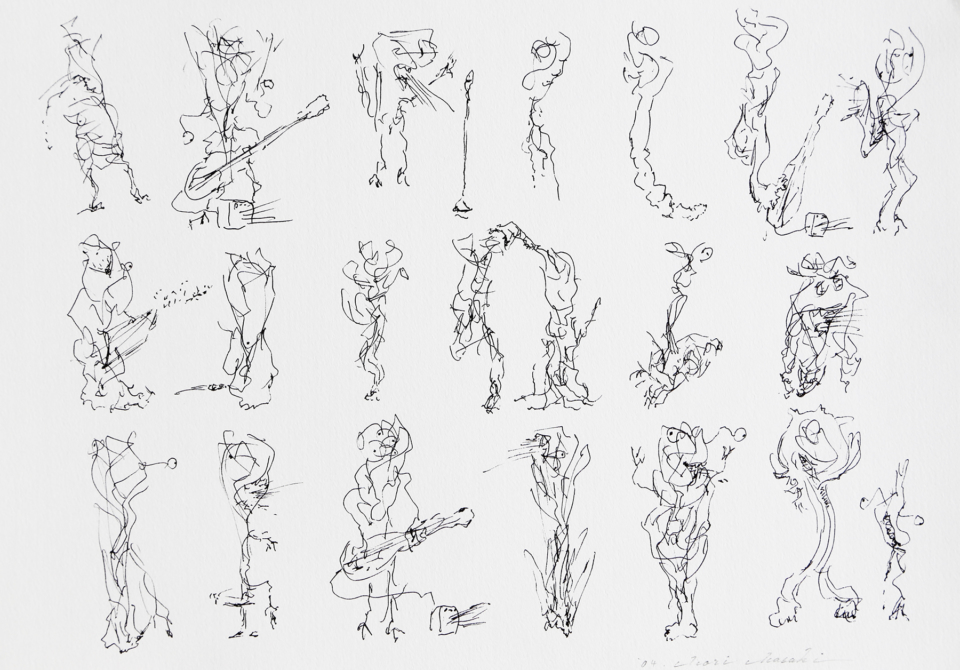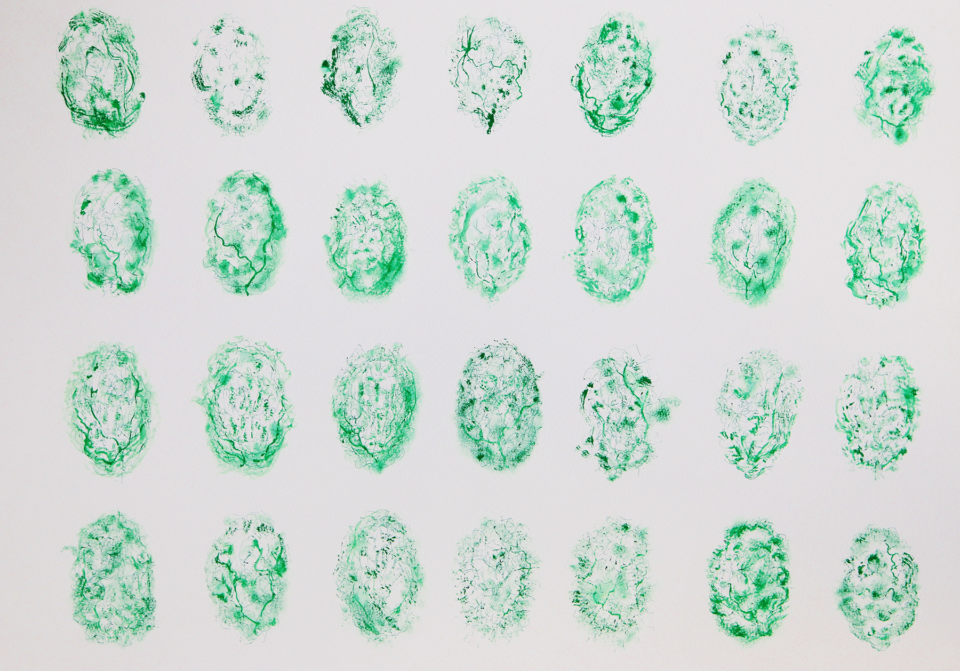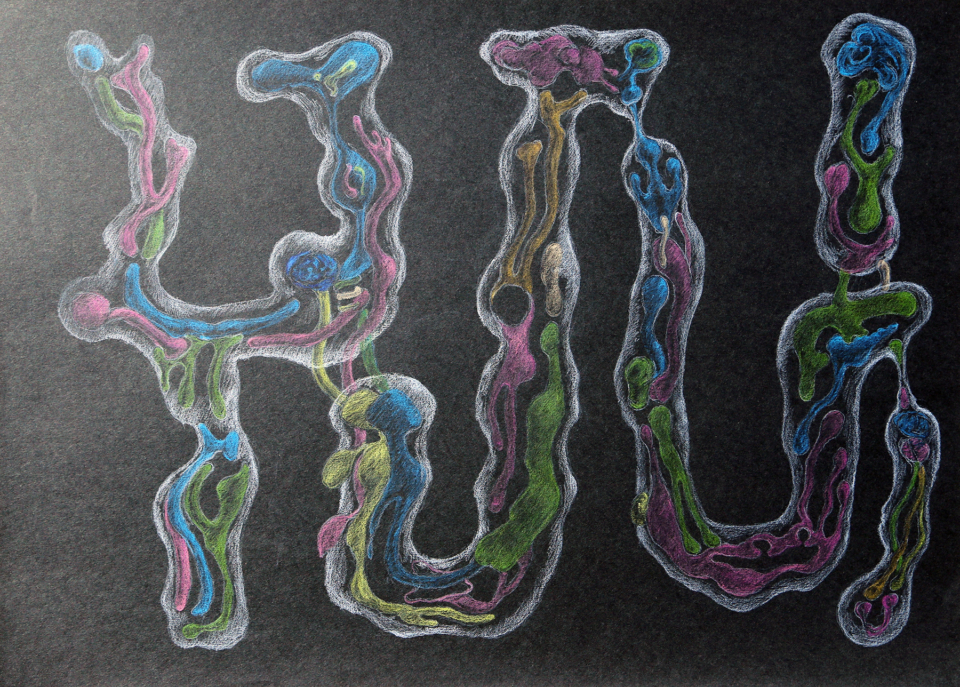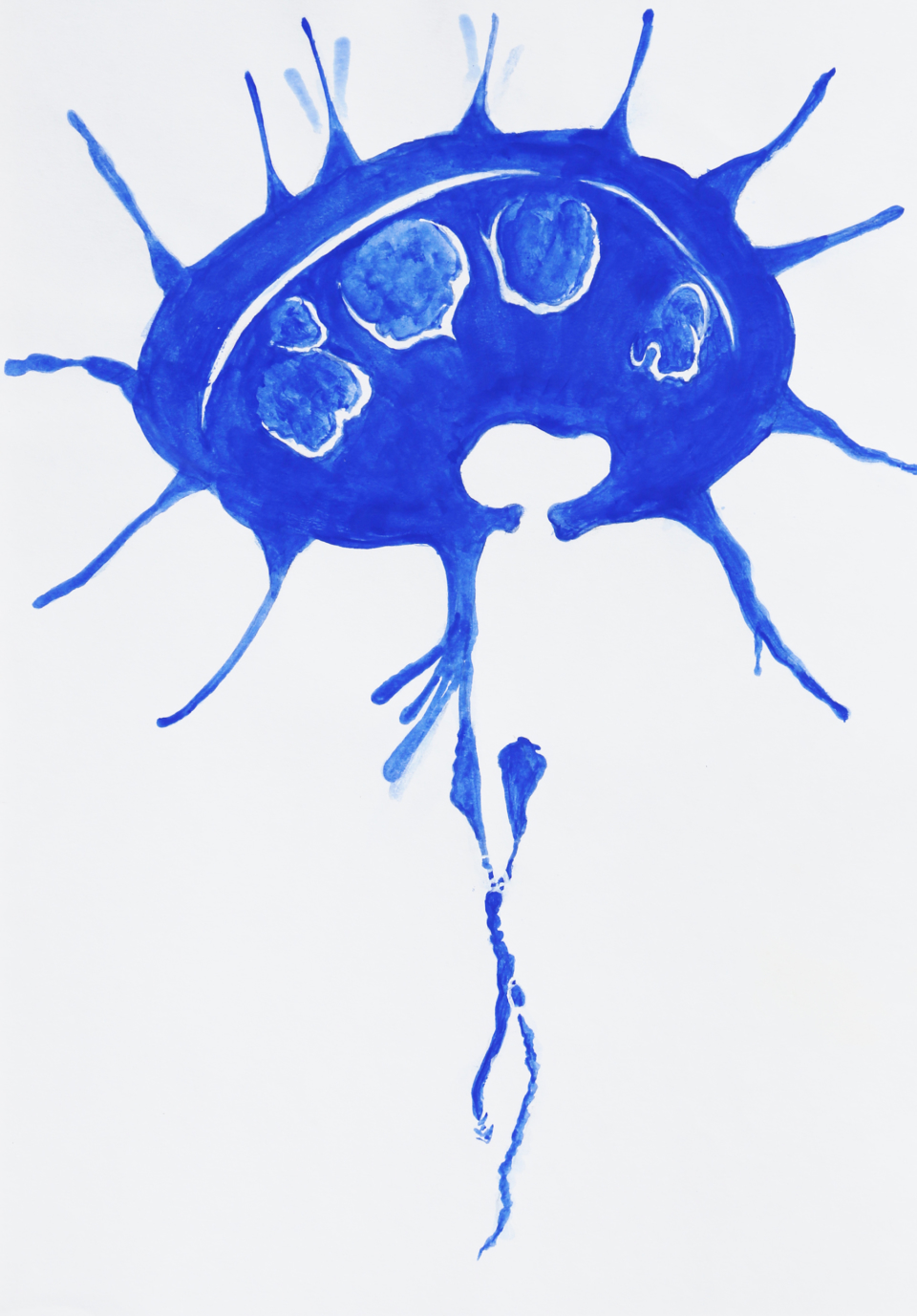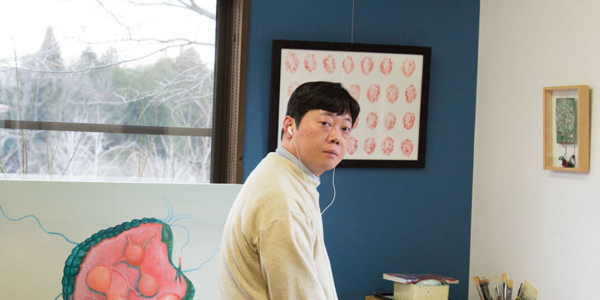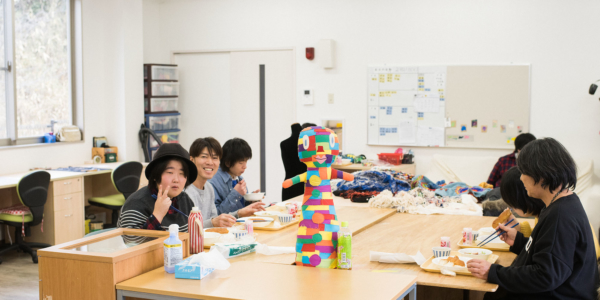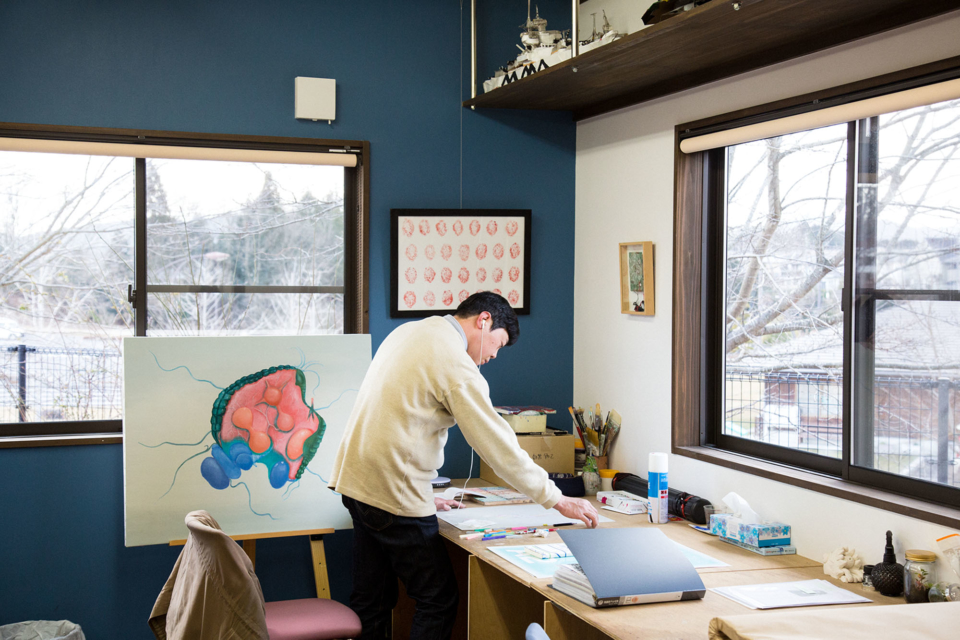
The Inside-Out Dance
Next to Mr. Mori, who is drawing on a white sheet of paper on the table, is a large canvas on an easel. I move closer, captivated by the picture drawn on the canvas, and Mr. Mori explains the picture for me in a very quiet voice.
“The theme of this picture is ‘The Inside-Out Dance.’ In 1947, Antonin Artaud, who is a poet I like, recorded To Have Done With the Judgment of God for a radio play, and in it he says: ‘When you will have made him a body without organs, then you will have delivered him from all his automatic reactions and restored him to true freedom. Then you will teach him again to dance inside side out…’ I drew this picture inspired by these words.”
As he speaks, Mr. Mori shows me his copy of To Have Done With the Judgment of God, which that particular passage is from. Antonin Artaud is a French playwright, poet, essayist, actor, and theatre director. A member of early Surrealism, and a pioneer of 20th century avant-garde theater. I learn for the first time that Artaud struggled with schizophrenia and mental breakdowns in his later life, and spent most of this time in asylums. Mr. Mori receives considerable inspiration from Artaud’s words, and derives ideas for his art pieces.
“I keep stock of my ideas every day. When I think of something I write it on a piece of paper, and when I have enough of these I lay them all next to each other in a row, putting together the ones that seem related, and forming them into ideas,” says Mr. Mori. He has been a member of ATELIER YAMANAMI since April of last year. Originally slated to attend a facility in Saitama Prefecture, he was turned away because of capacity issues and was introduced to ATELIER YAMANAMI by the facility director, after which he moved with his family to be near the workshop. Mr. Mori has a mental illness.
“Just like professional athletes that feel anxious if they don’t train every day, drawing for me is like training, and I feel anxious when I don’t draw. Drawing relieves my anxiety.”
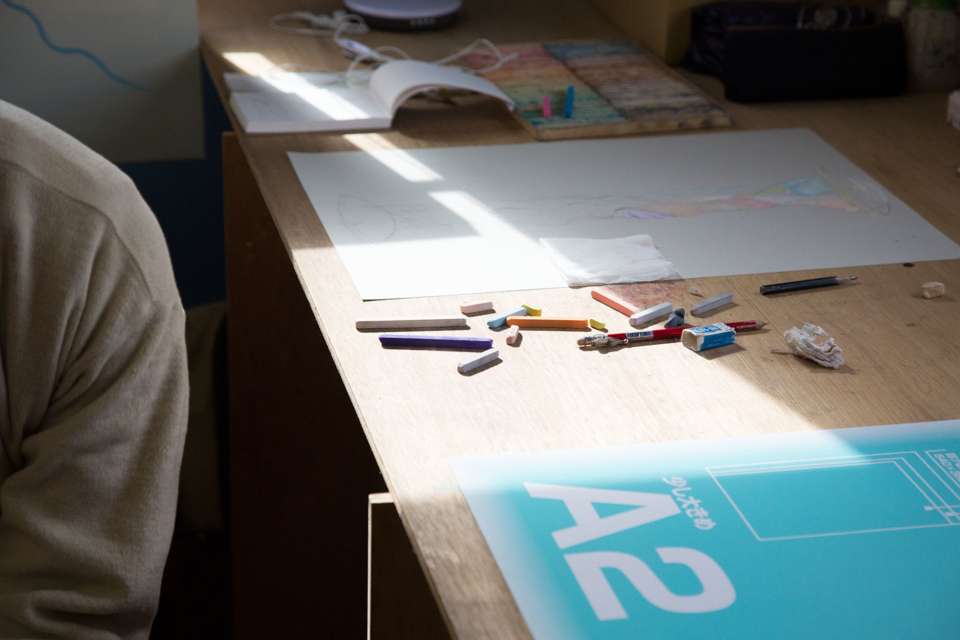
Can’t help but draw
I feel that Mr. Mori’s ever-present anxiety, a consequence of his long struggle against his illness, is expressed distinctly in the delicate lines he draws and the colors and structures in his pictures. People are drawn to him when his struggle, which only he can understand, is shifted into a form of expression like drawing. This too must be the essence of art.
“When I listen to Keiji Haino, I feel like my head is being pressed down. There’s such a depth to his music.”
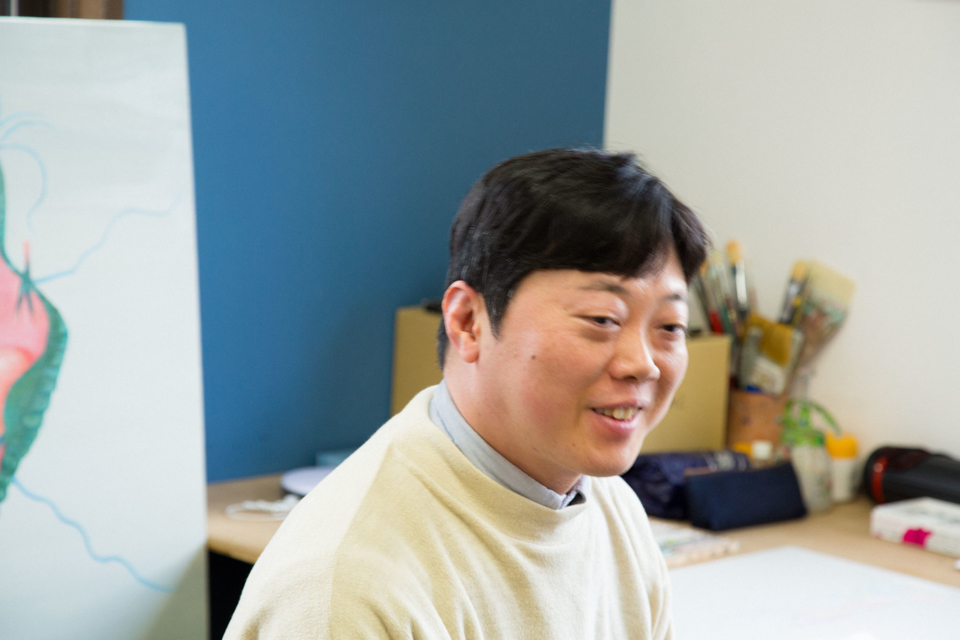
Keiji Haino, Robert Schumann, Steve Reich, Toru Takemitsu, Mamoru Fujieda, My Bloody Valentine… When Mr. Mori talks about the music he likes, the tone of his voice gets stronger.
“I like music that gives me an awareness of space. In terms of genre, I think jiuta (Japanese folk songs with shamisen [traditional three-stringed lute] accompaniment) has a powerful spatiality, so I listen to it often. Jiuta, historically, was music that was passed down through blind performers, and for people who can’t see, space is different than for those who can, in that it’s more physical and they feel it with all five of their senses. Which is why that genre of music provides a much richer and nuanced spatiality. Jiuta influences and stimulates me in the kind of pictures I draw.”
Though overwhelmed by Mr. Mori’s endlessly keen and perceptive intellect, I look at his piece, “The Wrong-Side-Out Dance,” and feel myself understanding something. Mr. Mori, by all odds, exists every day in a precarious gap between madness and sanity. I think then and there that I want to keep an eye on Mr. Mori’s artwork forever.
“I feel right now that I can’t help but draw, and also that there are more things that are meant to be drawn.”
